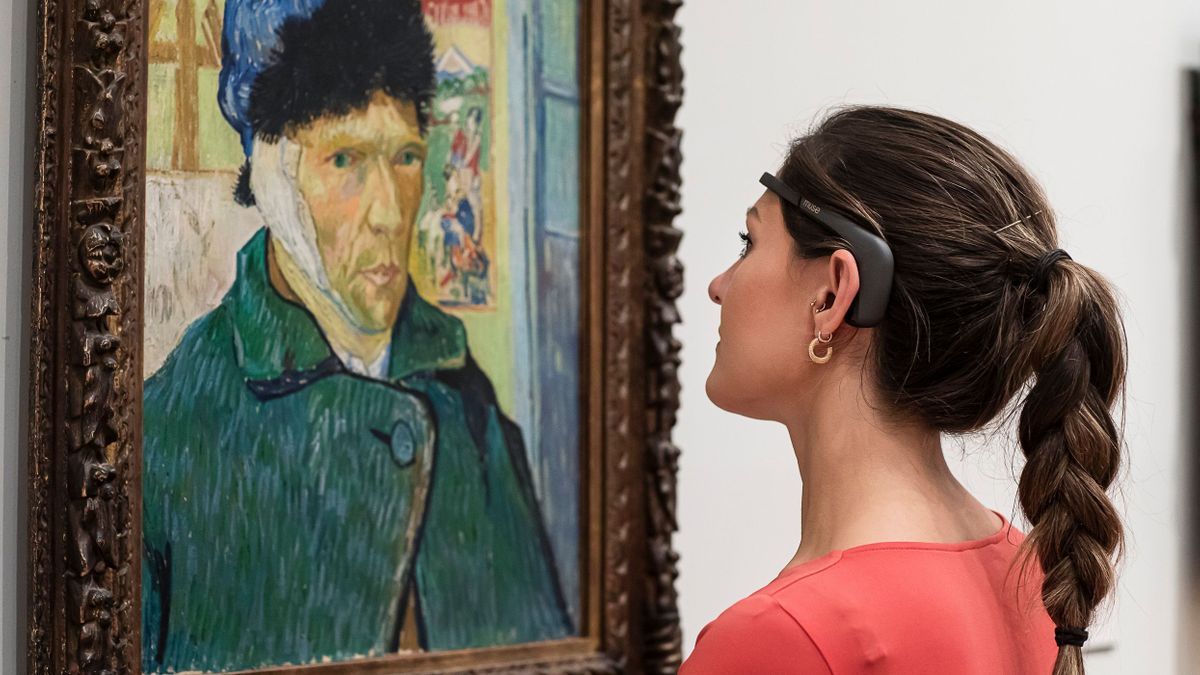
Art lovers don’t always know how to explain why they feel nothing when seeing a work of art, while others feel overwhelmed by emotion. A device, being studied in the United Kingdom, could soon help them understand their artistic preferences by analyzing their brain activity.
This device takes the form of a wireless headset, which is placed on the forehead of the wearer as well as behind their ears. It is equipped with sensors to record the brain activity of an individual viewing a work of art. This data is sent, in real time, to a computer so that an expert can analyze and visualize it in 3D, using technology developed by the special effects agency The Mill.
This new type of device is part of a project led by Art Fund, a British association seeking to democratize access to culture and museums. It was first tested at the beginning of November at the Courtauld Gallery in central London. Visitors were able to try it out as they wandered through the galleries of this museum, which houses works dating from the Middle Ages to the 20th century.
Some of them were able to see the electrical signals linked to certain activities of their brain while they admired “Self-portrait with bandaged ear” by Vincent Van Gogh (1889), “Lilies in a Jar” by Matthew Arnold Bracy Smith (1914) or “Shell Building Site” by Leon Kossoff (1962). At the same time, the testers had to answer a questionnaire on the emotions that each of these three paintings aroused in them. It emerged that most of the respondents felt “curious” and “intrigued” in front of the Van Gogh, “confused” and “curious” in front of the Kossoff, and “relaxed” in front of the Bracy Smith.
View this post on Instagram
Good in his body, good in his head!
Looking at a work of art awakens the brain
Dr. Ahmad Beyh, a neuroscientist who teaches at Rutgers University, emphasizes that this new device could advance our understanding of the brain mechanisms that help shape our artistic sensitivity. “We know that when a person sees something they find beautiful, for example a face or an abstract painting, the pleasure centers of the brain light up and the visual sensory center is engaged more intensely. Studies suggest that this phenomenon is accompanied by a release of dopamine, also known as the feel-good neurotransmitter“, he explained in a press release.
View this post on Instagram
An academic article, published in January in the journal Nature Communicationssupports his remarks by showing that several brain areas participate in the construction of an opinion on a work of art.
This new device will be tested in other art establishments in the United Kingdom during 2024. The Art Fund association has not yet revealed the list of partner institutions. But she hopes it will attract curious people to the museum. For good reason, one of its recent reports reveals that access to places of culture remains the lot of a privileged few in the United Kingdom. And this, from a very young age. Only 52% of disadvantaged British children and adolescents visited a museum in 2022. This proportion increases to 70% among young people from more affluent backgrounds.
